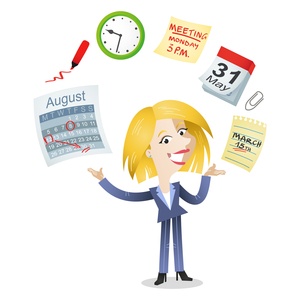Everyone is in search of a way to manage their time better. Well, time blocking is an effective scheduling technique where a person focuses on completing both large and small tasks by picking one at a time. It’s a good way to remove distractions, finish tasks faster and avoid being overwhelmed. Here’s how to start time blocking for the best results.
Break Down The Workload
 The first step is identifying the biggest priorities each day such as long-term projects and creating a list of the top 3. Next, write down a list of tasks that should be completed every day. Every task should have a time limit of how long it takes to complete. Finally, write down a list of activities that should be done every day but are not related to the official job. It could be spending more time with the family and much more.
The first step is identifying the biggest priorities each day such as long-term projects and creating a list of the top 3. Next, write down a list of tasks that should be completed every day. Every task should have a time limit of how long it takes to complete. Finally, write down a list of activities that should be done every day but are not related to the official job. It could be spending more time with the family and much more.
Create A Schedule
It’s important to schedule how to complete these tasks without following the clock. Rather than imagining the entire work day revolving around a clock but around completing the tasks set aside. When a person is the most productive, that’s when it’s prudent to tackle the hardest tasks. The hardest tasks should have at least one hour while the time reduces as a person moves down the list.
The entire day should be scheduled according to tasks that need to be handled each time. Any person whose energy increases as they progress through the day should reverse the tasks and handle the larger one last. Depending on the tasks that need to be handled by every individual, the schedules might be different. The low priority tasks should be scheduled for the end of the day.
That’s when a person is evidently tired and might not be very creative or productive. Here, the tasks that should be handled shouldn’t be critical or monotonous like returning calls or responding to emails. It’s also important to schedule time off such as when planning to go on vacation. Of course, there should be an empty block of time every day to improve flexibility, especially for tasks that need more time.
Long Term Scheduling
To follow through with the scheduling for long-term purposes, it’s prudent to create a digital calendar or paper. That way, it’s easier to keep track of the blocks even using a desk calendar. Also, create color-coding for the calendar to remember the different blocks and the tasks often scheduled there. If the schedule is to work, make sure the coworkers and family know about it. That way, everyone understands and knows what to expect from a typical workday.
A trial period is prudent to test whether the scheduling actually works. For instance, doing it for about a month might help a person identify what needs to be changed with the blocks. During the blocks, it’s a good idea to prevent any distractions that might take away the focus. Make sure the phone is on silent ringtone and minimize any background noises as well as removing notifications from social media accounts.